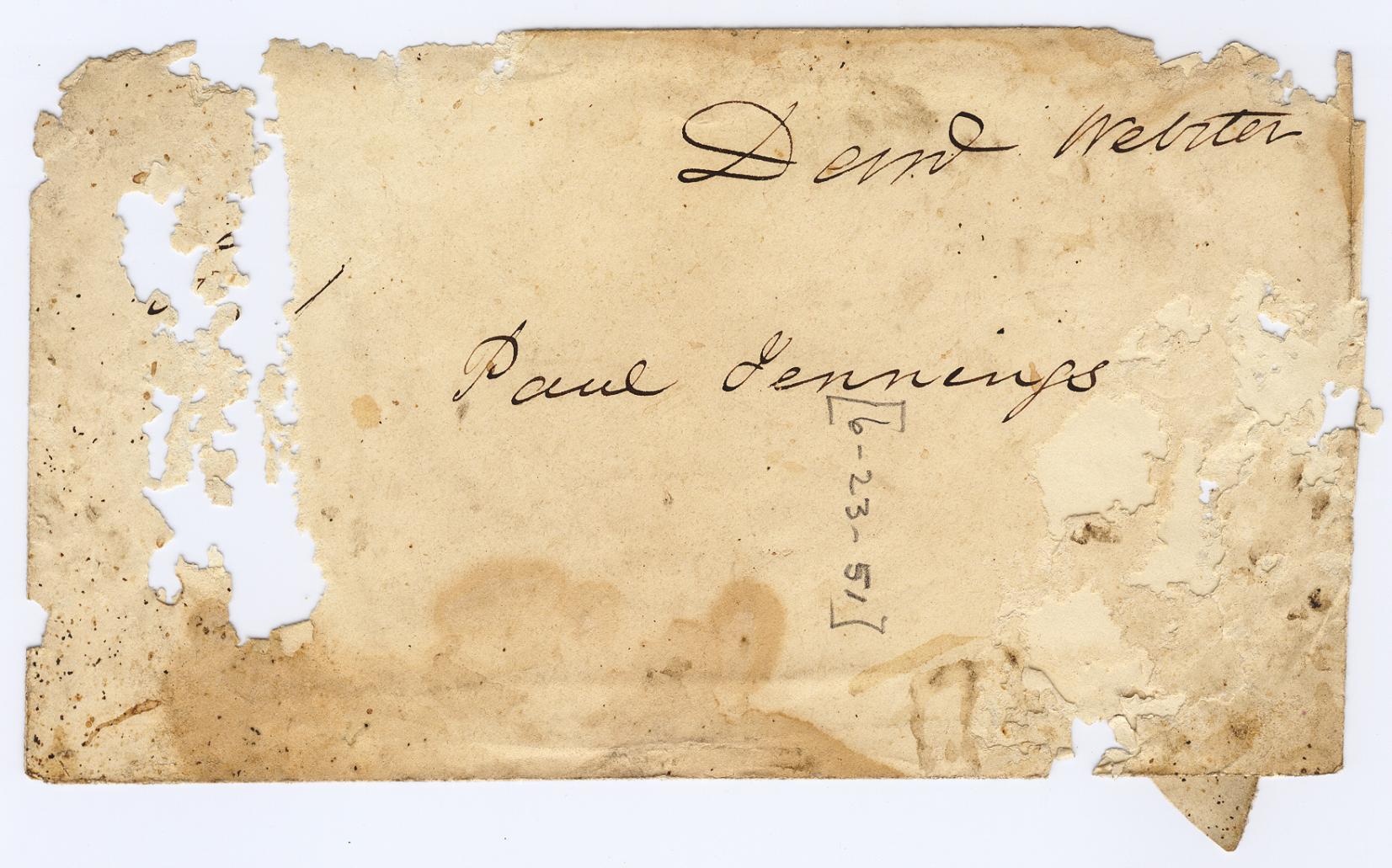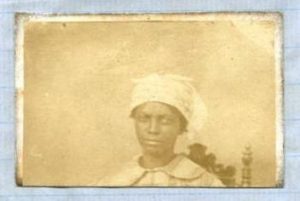Paul Jennings was born a slave at Montpelier, James and Dolley Madison’s Virginia plantation home, in 1799. He served as President Madison’s personal body servant before and during Madison’s time in the White House. Jennings was with Madison when he died in 1836. Struggling financially after her husband’s death, Dolley Madison eventually sold Paul Jennings to an insurance agent for $200. Senator Daniel Webster interceded and bought Jennings from the agent for $120. Webster then arranged for Jennings to work to purchase his freedom, which Jennings obtained in 1847.
Recently, archivists in the Southern Historical Collection re-discovered a short recommendation letter written in 1851 by Daniel Webster on behalf of Paul Jennings. The letter is filed with the SHC’s Alfred Chapman Papers (#1545). We have now updated the description in the finding aid to make specific mention of this letter. Please see below for a scan and transcription of Webster’s letter.
For a more complete history of Jennings’s life, please see:
A Slave in the White House: Paul Jennings and the Madisons, by Elizabeth Dowling Taylor (New York: Palgrave Macmillan, 2012).
*****
Item description: Recommendation letter, dated 23 June 1851, written by Daniel Webster (1782-1852) about his former slave, Paul Jennings (1799-1874).
Item transcription:
Paul Jennings was a servant in our house, for a considerable time. We think him very honest, faithful and sober; and a competent dining room servant. Formerly he was body servant to Mr. Madison.
Daniel Webster
June 23, 1851
Item citation:
From folder 3 of the Alfred Chapman Papers, #1545, Southern Historical Collection, The Wilson Library, University of North Carolina at Chapel Hill.





